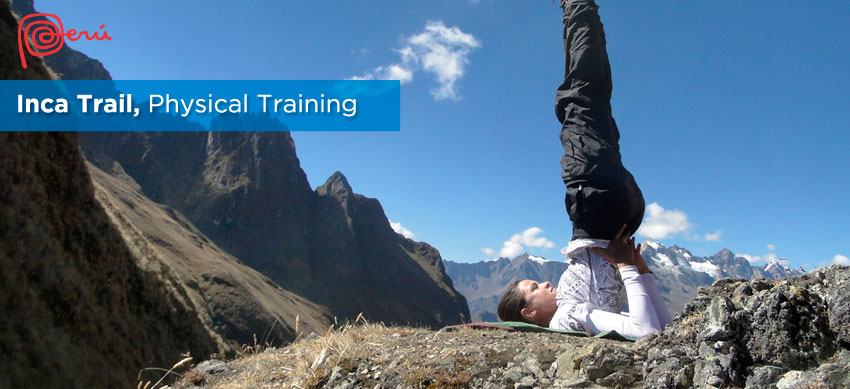
It is important to know which season do the Inca Trail with destination Machu Picchu.
Preparation for the Inca Trail Fitness, exercise and heart rate
 Muscles get stronger if they are used regularly, at a suitable level and for a sustained period. This is known as the training effect. As a hiker, you might think the most important muscles to train are in your legs, but in fact the heart is even more vital. If you train your heart muscle, it pumps blood more efficiently and delivers more oxygen.
Muscles get stronger if they are used regularly, at a suitable level and for a sustained period. This is known as the training effect. As a hiker, you might think the most important muscles to train are in your legs, but in fact the heart is even more vital. If you train your heart muscle, it pumps blood more efficiently and delivers more oxygen.
The fit person climbs more easily and uses less oxygen per unit of work done. When everything takes more effort than usual, as at altitude, it helps if your heart is pumping the available oxygen to your muscles and brain efficiently.
If you need to lose weight it makes sense to do so well before your trip, and gradually. Carrying surplus fat adds to your baggage and makes hiking more of an effort. However, don’t go to extremes: fat insulates your body from cold, and if you are very thin, you will have to carry more clothing to avoid hypothermia, especially at night.
Where and how to exercise
The answer depends on your preference, your lifestyle and where you live. If you live in or near pleasant terrain for waiking/jogging, have considerable self-discipline and don’t mind the weather, suitable footwear may be all you need. Consider getting a heart rate monitor to make your training more systematic. Try going out with a friend who also wants to get fit: if your training needs and paces are compatible, you will motívate each other.
If brisk walking or jogging does not appeal,find a mix of activities that you enjoy and can do often enough (three times per week). If you dislike an activity, you won’t stick to it. Anything that puts your heart rate into the target zone is fine, eg energetic dancing, cycling or swimming. Consider joining a gym or fitness centre, as their equipment is designed to measure and build CV fitness. A gym makes you independent of the weather and hours of daylight, there are trained staff, and it’s easy to monitor your progress.
Avoid relying on a single form of exercise. The smooth flat surface of a treadmill does nothing to prepare your leg muscles for rough terrain or steep descents. If you use a gym for convenience, try to complement it with some hill-walking in the weeks prior to departure, preferably on consecutive days and with steep ascents and descents.
However you exercise, minimise the risk of straining your body, especially at first, by warming up slowly beforehand, cooling down afterwards, and stretching both before and after. Stretch beforehand to reduce the risk of injury, but make sure your muscles are warm before you stretch. Stretch after exercise to prevent a build-up of lactic acid in your muscles, which leads to stiffness the next day.
Take a water container and drink plenty before, during and after your sessions.
When and how often to exercise
You don’t have to become an exercise junkie to walk these trails, nor give up your normal pleasures, but if you become fit you will enjoy the experience more. Start training long before you go: if you are very unfit, aim to start three to six months in advance. If you smoke, give it up at least until after your trip.
The best frequency for training is every other day: the body needs a rest day to extract maximum benefit from the training session. Since you may miss the odd session, three times per week is the goal for your main training period. Prior to departure, build up to longer sessions and higher target heart rates. Stop training a day or two before you leave, and plan your trip to stay the first two or three nights at higher altitude,taking minimal exercise on arrival.
By Inca Trail Machu Picchu - Last updated, 22-08-2024
Interested in the Inca Trail? Know more about Information Inca Trail!
- Inca Trail: prices and discounts
- Inca Trail hike as a therapy to heal body and soul
- What is it like to camp overnight on the Inca Trail?
- Online availability Inca Trail to Machu Picchu 2025
- Sustainability tips for the Inca Trail
- How to get to Ollantaytambo?

